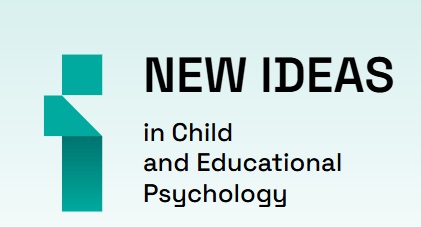Keywords
Internet
Publications
Karabanova O.A., Georgievskaya M.A. (2019). Attitudes Toward Ethical Standards of Internet Communication by Youth Users with Different Levels of Development of Moral Consciousness. Moscow University Psychology Bulletin, 4, 107-125
Background. The socialization of personality in the modern world occurs on the Internet and social networks, transforming traditional methods of communication on the basis of ethical standards for constructing interpersonal Internet communication. The basic rules are: personal responsibility for actions performed on the network, including illegal actions; respect and equality of partners; confidentiality; copyright protection; and privacy. The relevance of the problem of ethical standards in Internet communication in adolescence is due to its importance for youth and their formation of moral consciousness as a developmental task.
Objective. This study is aimed at identifying attitudes toward ethical standards of Internet communication among youth users with different levels of moral consciousness. Our research goals were: 1) elaboration and testing of the author's technique “Ethical Dilemmas in Internet Communication” (EDI); 2) discovering attitudes towards ethical standards in Internet communication and strategies for resolving ethical dilemmas; and 3) study of the relationship between the level of the moral consciousness of respondents and their orientation toward following the basic ethical standards in Internet communication.
Design. The methods used were the author’s EDI technique, including ethical dilemmas, and the questionnaire "Justice-Care" (S.V. Molchanov). The sample consisted of 61 subjects.
Results. We found an ambiguous attitude by users of the Internet network toward the ethical standards of communication and a differentiated attitude toward following ethical standards. A high level of willingness to follow the norm was identified for copyright protection, but a low one for respecting the inviolability of personal life and taking personal responsibility for actions performed on the network. The strategies for solving ethical dilemmas in Internet communication were clear. The hypothesis about the connection of the level of moral competence and the attitude toward following basic ethical standards in Internet communication was verified.
Received: 08/05/2019
Accepted: 10/08/2019
Pages: 107-125
DOI: 10.11621/vsp.2019.04.107
Keywords: Internet;
e-interaction;
media communication;
adolescence;
moral competence;
ethical standards;
Available Online: 08/31/2019
Kruzhkova O.V., Vorobyeva I.V. (2019). Personal characteristics of teenagers, youth, and young adults on the internet: vulnerability zones for extremist influence through digitalization. Moscow University Psychology Bulletin, 4, 160-185
Background. The digitalization of society is making changes in the lifestyle of the whole population today. However, while the older generation uses the Internet as a tool, the teenagers, youth, and young adults perceive it to be a full-fledged living environment. Today, Internet resources are the main way of involving young people in extremist groups, and radicalizing them. The role of the Internet as a means of socialization is actively discussed in scientific discourse, and questions about the prevention of the negative impact of the Internet environment are being raised, as well as about the technologies and mechanisms used for exerting extremist influence. However, it is important to understand that the features of the sense of identity of the recipient are essential for the formation of sensitivity to Internet exposure, including to extremism.
Objective. The aim of our study was to identify personal predictors of the involvement of teenagers, youth, and young adults with the Internet, as well as to analyze their personality traits and vulnerabilities for extremist influence via the Internet.
Design. Our research methods included a sociological questionnaire for analyzing the involvement of respondents in the Internet environment, and adaptations of the psycho-diagnostic methods HEXACO, “The Dark Triad,” and a modified projective technique “Houses.” Our study sample was comprised of 2051 people (528 teenagers 13-15 years old, 686 youth 16-20 years old, and 836 young adults 21-29 years old).
Results. The results of the study showed that 16.9% of respondents are characterized by maximum involvement and immersion in the digital environment. Compared with the contrasting group of respondents who are less actively immersed in the Internet environment, the “involved teenagers, youth, and young adults” are characterized by a stable complex of personal characteristics (narcissism, “Machiavellianism,” inability to forgive, lack of organization, negative mood patterns, etc.). Also, behavioral markers and zones of vulnerability are defined for respondents who are characterized by maximum involvement and immersion in the digital environment while experiencing extremist influence on them.
Conclusion: The identified personal characteristics of teenagers, youth, and young adults actively involved in the Internet environment allow us to define and specify measures to prevent the radicalization of this group.
Received: 07/30/2019
Accepted: 09/10/2019
Pages: 160-185
DOI: 10.11621/vsp.2019.04.160
Keywords: personality;
Internet;
informational environment;
involvement;
youth extremism;
cyber-socialization;
digitalization;
Available Online: 08/31/2019









